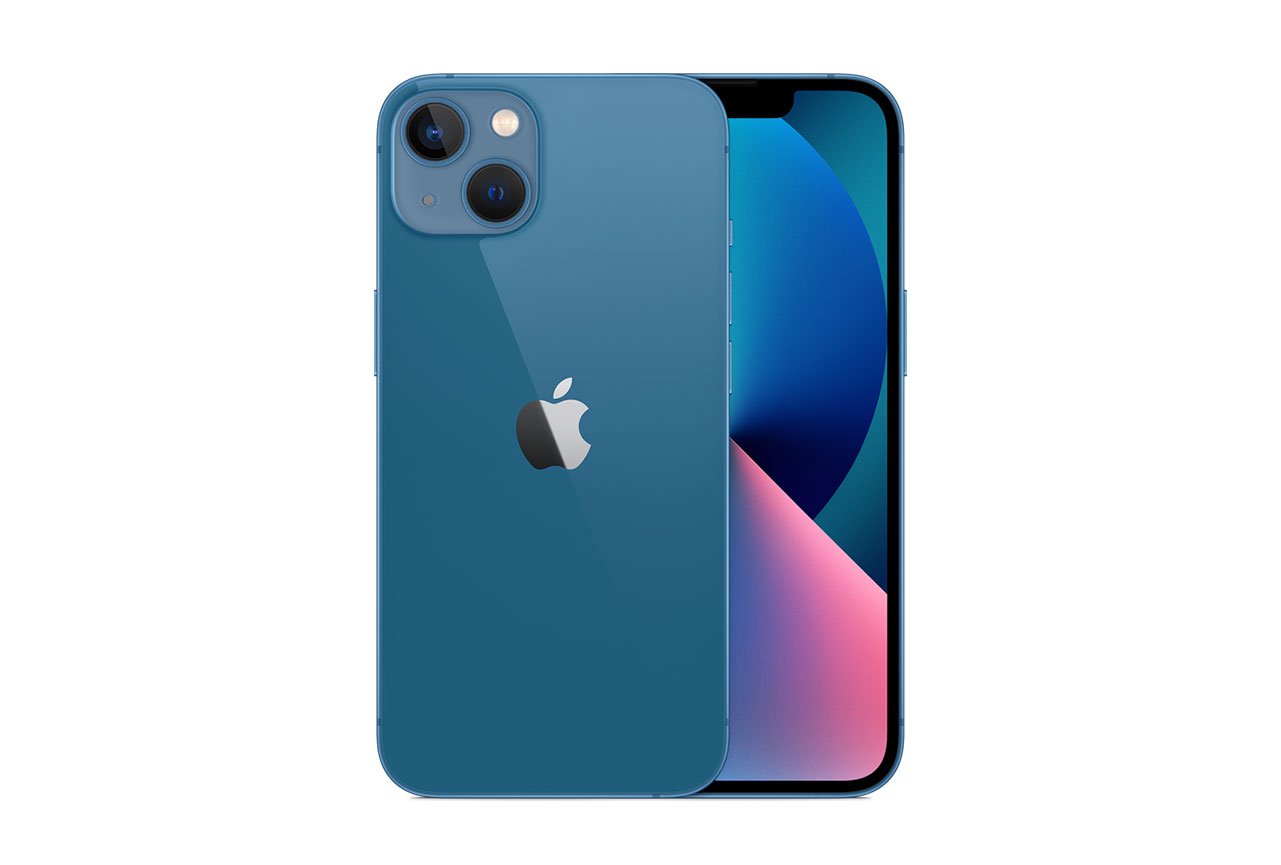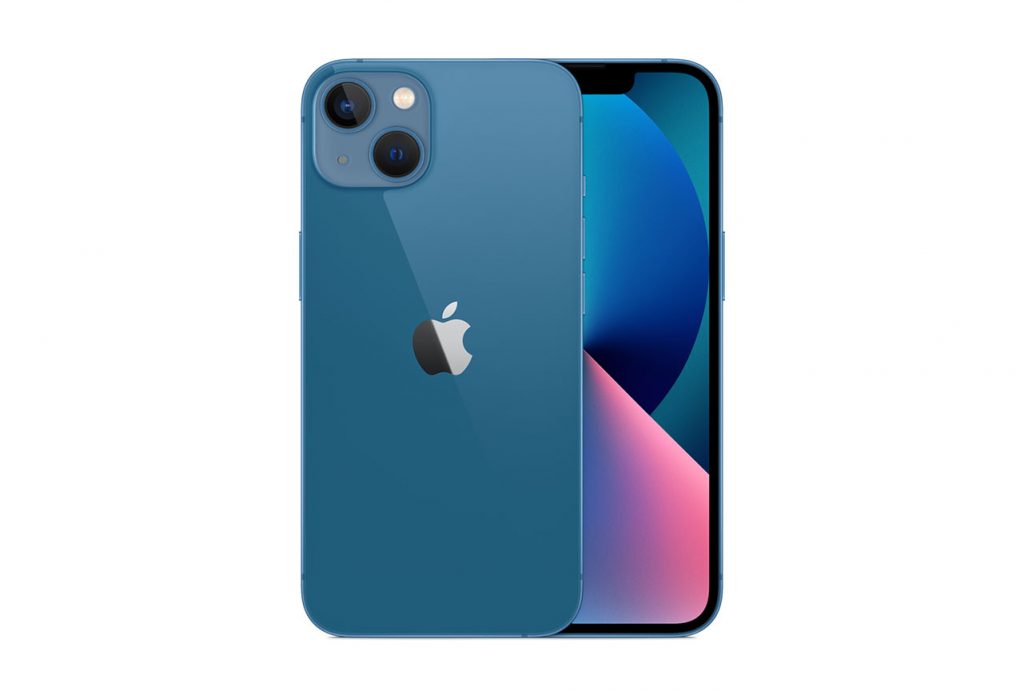The iPhone 13 is the latest generation in Apple’s most venerable “classic” iPhone dynasty, now powered by the A15 Bionic chipset. On the audio playback front, Apple partnered with Dolby Labs to deliver an immersive stereo reproduction. As for recording, the audio zoom algorithm is still implemented when filming videos.
To check on all this — and much more — we put the Apple iPhone 13 through our rigorous DXOMARK Audio test suite to measure its performance both at recording sound using its built-in microphones, and at playing audio back through its speakers. In this review, we will break down how it fared in a variety of tests and several common use cases.
Key Audio specifications include:
-
- Two speakers (up front-firing, and bottom side-firing)
- Audio zoom
- Dolby Atmos
- Voice Isolation and Wide Spectrum microphone modes (for calls)
- User‑configurable maximum volume limit
About DXOMARK Audio tests: For scoring and analysis in our smartphone audio reviews, DXOMARK engineers perform a variety of objective tests and undertake more than 20 hours of perceptual evaluation under controlled lab conditions. This short review highlights the most important results of our testing. Note that we evaluate both Playback and Recording using only the device’s built-in hardware and default apps.
(For more details about our Playback protocol, click here; for more details about our Recording protocol, click here.)
Test summary
Scoring
Sub-scores and attributes included in the calculations of the global score.

Apple iPhone 13


 34th
34th 10th
10thPlayback
Pros
- Very consistent performances among all attributes
- Pleasant tonal balance, with added low mid warmth compared to previous iPhone generations
- Precise localizability and very good wideness despite stereo being inverted
Cons
- Stereo is still inverted in Music app, as it is with all iPhones
- Bass distortion at maximum volume
Recording
In terms of audio, the Apple iPhone 13 delivers a highly similar performance to that of its bigger brother, the flagship 13 Pro Max, as evidenced by its identical Audio score of 75. So much so that if sound is your priority, there’s no reason to splurge for the 13 Pro Max.
Throughout this short review, we’ll compare it to its Pro Max version. For a full-fledged review, you can read the Apple iPhone 13 Pro Max review.
Playback

Timbre
Apple iPhone 13
74
89
In playback, the latest generation demonstrates a true skill for gaming and watching movies, thanks to excellent spatial results in all attributes (with an even better localizability than its Pro Max sibling), a harmonious tonal balance with a rich, full midrange, impactful and sharp dynamics overall, and skillful management of sonic artifacts and user-induced speaker occlusions. While high-end, albeit very satisfying, is slightly less extended, the bass distortion occurring at maximum volume is less perceivable. The phone’s low-end extension, although very good, isn’t up to par with our top-scoring phones.
It is also a very good companion for listening to a podcast, playing a game or watching a movie before falling asleep, with its very well-tuned minimum volume leaving dynamic content fully intelligible. Volume steps distribution is very consistent from softest to loudest, as shown in the graph below:
Maximum volume, although superior in number (see table below), sounds slightly less impressive than the Pro Max. Finally, as with all iPhone models, note that the left and right channels are inverted by default when using the music app. Here are a few sound pressure levels (SPL) measured when playing our sample recordings of hip-hop and classical music at maximum volume:
| Hip-Hop | Classical | |
| Apple iPhone 13 | 74.3 dBA | 70.8 dBA |
| Apple iPhone 13 Pro Max | 72.5 dBA | 69.5 dBA |
| Apple iPhone 12 Pro Max | 72.5 dBA | 70.3 dBA |
Recording

Timbre
Apple iPhone 13
79
91

Dynamics
Apple iPhone 13
64
81

Spatial
Apple iPhone 13
55
78

Volume
Apple iPhone 13
75
99

Artifacts
Apple iPhone 13
81
97
As a recording device, the iPhone 13 produces a somewhat darker timbre than the previous generations, due to a limited high-end extension and an overall lack of brightness. However, timbre remains natural, warm, and fairly consistent despite volume variations.
While recording in loud environments is a commonly shared iPhone ability, the 13 outshines its predecessors by providing clear, precise, and rich midrange, powerful bass, a precise capture of the sound envelope, and overall an excellent resilience to high-pressure levels. Additionally, it also produces a brighter and clearer sonority than the Pro Max in this configuration — for example, when filming a concert. Here are some of our test results for volume in quieter scenarios, measured in LUFS (Loudness Unit Full Scale); as a reference, we expect loudness levels to be above -24 LUFS for recorded content:
| Meeting | Life Video | Selfie Video | Memo | |
| Apple iPhone 13 | -25 LUFS | -22.5 LUFS | -20.4 LUFS | -18 LUFS |
| Apple iPhone 13 Pro Max | -25.5 LUFS | -22.7 LUFS | -20.2 LUFS | -18.2 LUFS |
| Apple iPhone 12 Pro Max | -23.7 LUFS | -22.4 LUFS | -19.7 LUFS | -18.8 LUFS |
Selfie videos also fared very well in our protocol, with well-balanced midrange, and impressive wideness considering the fact that this use case is evaluated in portrait mode. As for artifacts, the 13, as its Pro Max version, features a very interesting DSP compensation for partial occlusion of the microphones (when the phone is held with only one hand, for example). You can check for artifacts yourself in this sample recording:
As good as it’s getting, the iPhone 13 has a little margin for improvement in the recording area. Its main limitation is a lack of treble information and high-end extension which, besides inducing a darker sonority, makes voices less intelligible by preventing them from rising above background noise in louder environments, thus altering the signal-to-noise ratio.




DXOMARK encourages its readers to share comments on the articles. To read or post comments, Disqus cookies are required. Change your Cookies Preferences and read more about our Comment Policy.